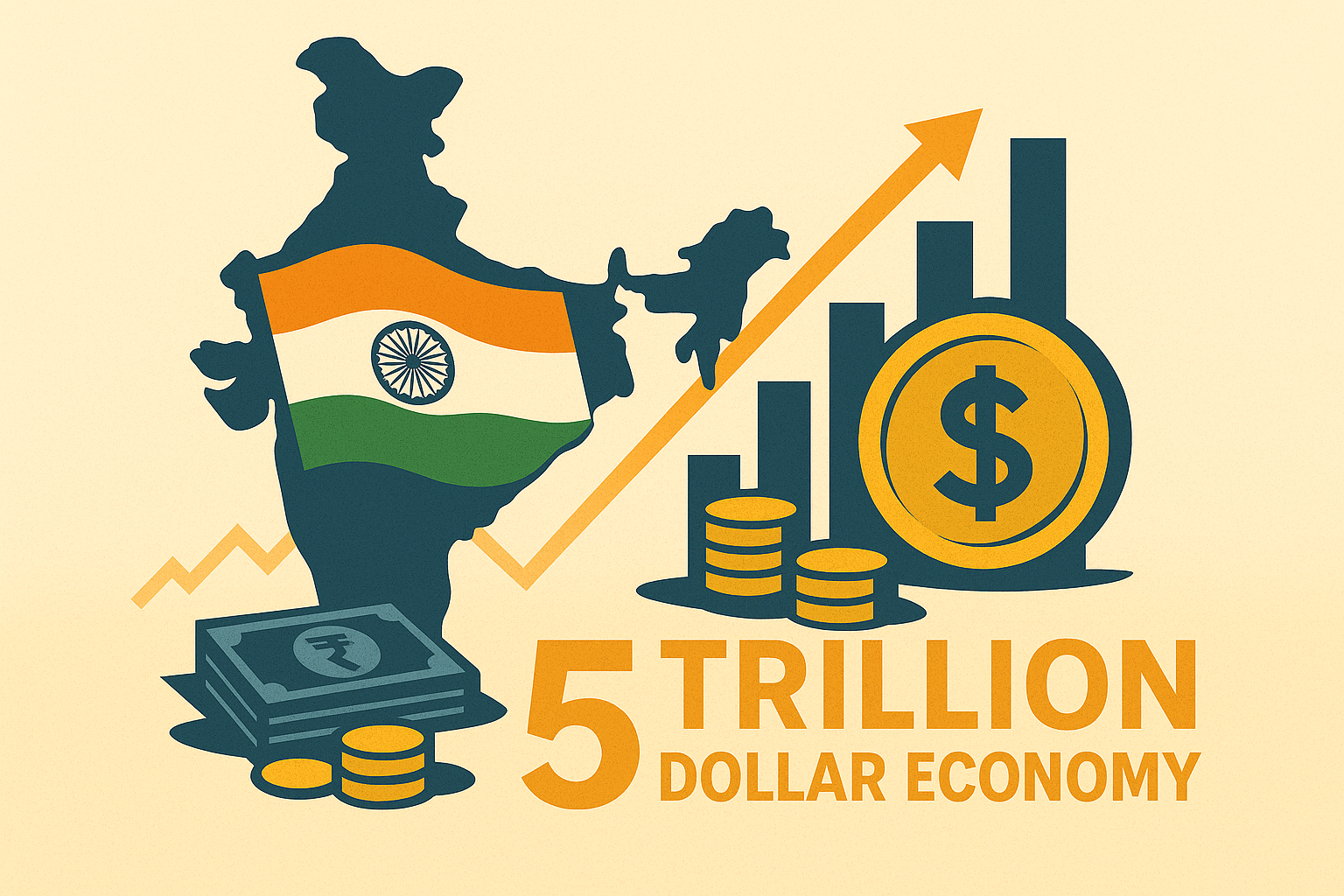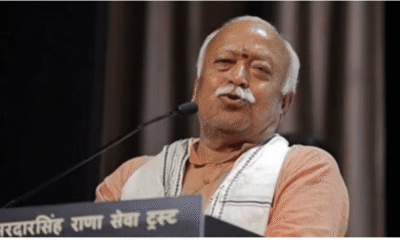
|
Getting your Trinity Audio player ready...
|
(The article was originally published in Indian Express on June 07, 2025 as a part of Dr Madhav’s column titled ‘Ram Rajya’. Views expressed are personal.)
In May, Indian economy crossed another milestone by overtaking Japan and becoming the fourth largest in the world. It is a commendable achievement for a country that began the journey as an independent nation in 1947 with a meagre $ 33 billion economy. Decades of British exploitation left it significantly weakened and poor. Jawaharlal Nehru government’s Soviet-style central planning in the post independence decades, although promoted heavy industry and public sector, led to low economic growth of 3-4%, pejoratively described as “Hindu Growth”. In 40 years, it could only reach $266 billion mark.
First major jump came in 1991 when the Narasimha Rao government introduced economic liberalisation policies and unleashed the potential of Indian entrepreneurs. The opportunity offered by the digital revolution with the introduction of internet was quickly seized by some of India’s brightest tech-entrepreneurs. Indian economy grew manifold in next two decades on the strength of its services economy, which occupied 60% of nation’s GDP, and crossed $ 2 trillion by the time Narendra Modi government came to power.
Last ten years saw Modi government giving greater emphasis to faster economic growth through programs like Stand-Up India, Start Up India and Make in India. Results of these efforts are in front of our eyes. International institutions like the IMF released data in May this year that showed that Indian economy overtook Japan by reaching $ 4.19 trillion mark. Japan was once a $ 5.8 trillion economy which shrunk to $ 4.18 trillion today due to stagnation and slow growth rates since the 1990s.
As India demonstrated promising growth, its naysayers rushed forward to raise the hollow bogey of per capita. Per capita is determined by factors like the size of the population. India is the world’s most populous country. As a result, whatever may be the size of GDP, its per capita figures are bound to remain low. No country’s growth can be measured on the criterion of per capita alone. Although the US is the world’s largest economy with $ 28 trillion GDP, it ranks 7 in the world in per capita ratings. China, the second largest economy with $ 18 trillion, ranks 69. Per capita argument is worthless because even if India becomes the world’s largest economy with $ 30 trillion, it will still be ranked 55th in terms of per capita. Worth of that argument is only to the extent that the country should be able to provide better living standards to all its citizens.
In democracies, fruits of economic growth naturally percolate to all sections of the society. That growth reflects in the consumption patterns of a society. Surveys indicate that the monthly per capita expenditure (MPCE) has increased in India by more than 2.5 times in the last ten years. Interestingly, most of this expenditure was on travel, health and education, indicating healthy growth parameters.
One sector that registered a remarkable growth in the last ten years was tourism. The Chinese were considered great travellers in the world. China still occupies first rank in number of domestic and international travellers. India lagged behind in this sector for decades due to lack of disposable household incomes and lack of tourism infrastructure. But today, with incomes of the middle class growing substantially, Indians too started traveling more. Data indicates that 2.5 billion tourists traveled domestically last year. That means every Indian is traveling twice a year on average. In the last decade, international travel too grew substantially and the figures for 2024 indicate that almost 29 million Indians traveled abroad marking a 30% growth.
All this indicates to a healthy growth of our economy leading to eradication of baseline poverty and creation of a strong middle class with sufficient disposable incomes. Modi government aspires to take economy to further heights with targets ranging from $ 5 trillion in 2027 to $ 10 trillion in 2035. Current impressive growth was a result of the corrective measures taken by the government in last one decade. It removed parallel economy, allowed proper distribution of wealth and encouraged greater consumption.
But the path from here needs to be calibrated carefully. Economies grow on the strength not just of consumption alone but on the strength of trade and technology. Quality, quantity and speed are the main determining factors. In the pre-mechanisation era, India and China were leading economies in the world until the middle of the 18th century. But when the Industrial Revolution occurred first in England and later in America in the two consecutive centuries, those two countries surged ahead and became leading economic powers by the dawn of 20th century. When automation and digitisation progressed in the last decades of the last century, China moved ahead of the curve and dominated the space, emerging as the second largest economy by 2008.
We are now in the post-manufacturing and post-digital era in which growth in frontier technologies will determine a country’s economic future. In this era of deep tech, a country of India’s size and capability cannot just think perpetually in terms of catching up with the developed West and the rest. It has to, instead, think in terms of seizing the new opportunity and move ahead of the curve.
We missed first two industrial revolutions as we were a slave nation at that time. We benefitted partially from the third, digital, revolution of 1980s and 90s and became leaders in sectors like IT services. But the fourth industrial revolution, led by frontier technologies like Artificial Intelligence (AI), quantum technologies, robotics, space, defence, crypto and bio engineering, calls for new thinking and new priorities. Impressive growth of Indian economy in the last decade was essentially due to the unleashing of its basic potential. Trajectory from here should be more strategic, with greater emphasis on deep-tech R&D, an area in which we seriously lag behind, and a climate of hassle-free access to investments in that area. Only then can India aspire to achieve its goal of becoming a $ 10 trillion economy in next ten years.




